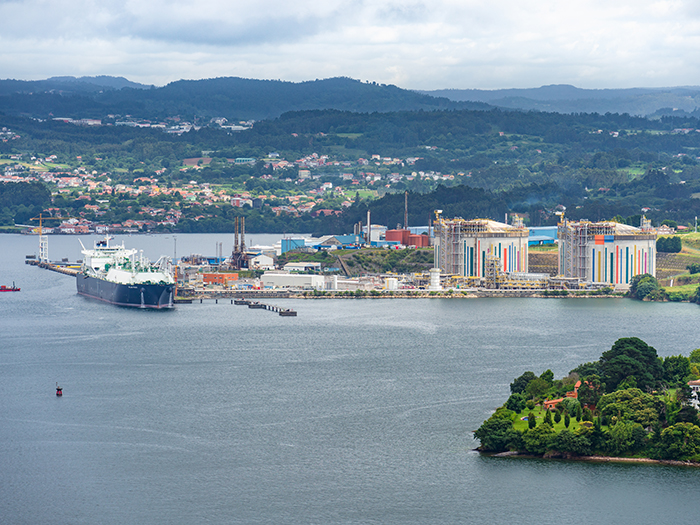What’s Taking Big Ships Down Despite a Decline in Global Marine Losses? Allianz Report Digs In

A new report from Allianz reflects a generally positive trend: The number of ships lost globally continues to decline. Losses of large ships, however, continue to plague ship owners and marine insurers.
Just 54 large ships were lost worldwide last year, according to the Allianz Global Corporate & Specialty (AGCS) Safety & Shipping Review 2022, released in mid May. Total losses are down 57% over the past decade.
“Total losses are at record lows — around 50 to 75 a year over the last four years compared with 200+ annually in the 1990s,” said Captain Rahul Khanna, global head of marine risk consulting at AGCS.
Overall, there is still plenty of risk-transfer capacity, and buyers of marine insurance shouldn’t be experiencing undue sticker shock.
“The rating environment for cargo remains generally favorable after consecutive years of rate rises. Despite some increasing hazards, however, additional rate rises are more challenging than before as there is more capacity and willingness to use it in the market today,” said Rich Soja, North American head of marine and global head of inland marine at AGCS.
“Beyond pricing, terms and conditions remain stable, or are more restrictive in the case of cyber and war,” he added.
What’s Driving Losses?
Fires, container ship and car carrier incidents leading to oversized losses, and general average being invoked are becoming more frequent, the report stated.
Important risk factors cited include: growing use of non-container vessels to carry containers, working life of vessels being extended, port congestion putting crews and facilities under pressure.
Sustainability concerns are driving up costs of salvage and wreck removal. Decarbonization of the shipping industry is creating new risks.
The Good News
During 2021, 54 total losses of vessels were reported globally, compared with 65 a year earlier. This represents a 57% decline over 10 years (127 in 2012), while during the early 1990s the global fleet was losing 200+ vessels a year.
The 2021 loss total is even more digestible when you consider that there are an estimated 130,000 ships in the global fleet today, compared with some 80,000 30 years ago. Such progress reflects the increased focus on safety measures over time through training and safety programs, improved ship design, technology and regulation.
That said, big ships still sink, when perhaps, experts feel they shouldn’t.
“It is surprising that these big incidents keep happening,” said Miguel Herrera, senior maritime risk consultant with Alliance Risk Consultancy.
That said, “it is a very complex problem and lessons are being learned. Smaller ships have smaller problems, big ships have bigger problems. Everyone — builders, owners, charterers and insurers — are collaborating on modifications to design of vessels and fire protection, as well as training of crews.”
Other Sinking Factors
While the focus is on growing trends, especially aggregation of risk aboard immense vessels, Herrera stressed that some constants remain important drivers of loss. Undeclared cargo is first on that list.
“That has always been a risk of which the industry has been aware. And we emphasize risk mitigation from packaging and securement to crew training and equipment. Still, a fire in one container out of 3,000 or even 10,000 is easier to find and fight than in one out of 20,000.”
The ubiquity of lithium-ion batteries in everything these days only makes fire fighting all the more complicated, Herrera added. He further noted that even as ships and cargoes have gotten much larger, automation has meant that crews have stayed very small, even on the largest vessels.
“Despite all that, we cannot overlook the positivity in terms of overall losses,” said Herrera.
“The industry has come a long way in just a few years. Thirty years ago, losses were 200 ships a year; in the last few years, it has been 50 or 60 ships. And the fleet 30 years ago was smaller. Lessons are being learned. Training and regulations are being modified. Communication is better. Risk management is better. It just takes time to turn a big ship around.”
Crews are also an important emerging segment in risk management, Herrera said.
“There is a wider awareness of seafarers, their welfare and the role they play in the global economy.” The wellbeing of mariners, their ability to get to and from vessels, their care on board and shore side in foreign ports, all have come front and center as key to the global supply chain.
According to the report, there have been almost 900 total losses over the past decade. The South China, Indochina, Indonesia, and the Philippines maritime region is the main global loss hotspot, accounting for one-in-five losses in 2021 (12) and one-in-four-losses over the past decade (225), driven by factors, including high levels of trade, congested ports, older fleets and extreme weather.
Globally, cargo ships (27) account for half of vessels lost in the past year and 40% over the past decade. Foundered (sunk/submerged) was the main cause of total losses over the past year, accounting for 60% (32).
While total losses declined over the past year, the number of reported shipping casualties or incidents rose. The British Isles saw the highest number (668 out of 3,000). Machinery damage accounted for over one-in-three incidents globally (1,311), followed by collision (222) and fires (178), with the number of fires increasing by almost 10%.
Impact of War
The report did address the effect of the Russian invasion of Ukraine. Immediate insurance issues were, logically, confined to the Black Sea, but the report noted several wider implications.
Russian seafarers account for just over 10% of the world’s 1.89 million workforce, while around 4% come from Ukraine. These seafarers may struggle to return home or rejoin ships at the end of contracts due to the conflict.
Longer term, the report anticipated that “a prolonged conflict is likely to have deeper consequences, potentially reshaping global trade in energy and other commodities. An expanded ban on Russian oil could contribute to pushing up the cost of bunker fuel and impacting availability, potentially pushing ship owners to use alternative fuels.”
Fire and the Environment
During the past year, fires on board the car carrier Felicity Ace and the container ship X-Press Pearl both resulted in total losses, the report noted. Cargo fires are indeed a priority concern. There have been over 70 reported fires on container ships alone in the past five years, the report noted.
Fires often start in containers, which can be the result of non-/mis-declaration of hazardous cargo, such as chemicals and batteries — around 5% of containers shipped may consist of undeclared dangerous goods.
Fires on large vessels can spread quickly and be difficult to control, often resulting in the crew abandoning ship, which can significantly increase the final cost of an incident.
“Too often, what should be a manageable incident on a large vessel can end in a total loss,” Khanna explained.
“Salvage is a growing concern. Environmental concerns are contributing to rising salvage and wreck removal costs as ship owners and insurers are expected to go the extra mile to protect the environment and local economies,” said Khanna.
“Previously, a wreck might have been left in-situ if it posed no danger to navigation. Now, authorities want wrecks removed and the marine environment restored, irrespective of cost.” &










